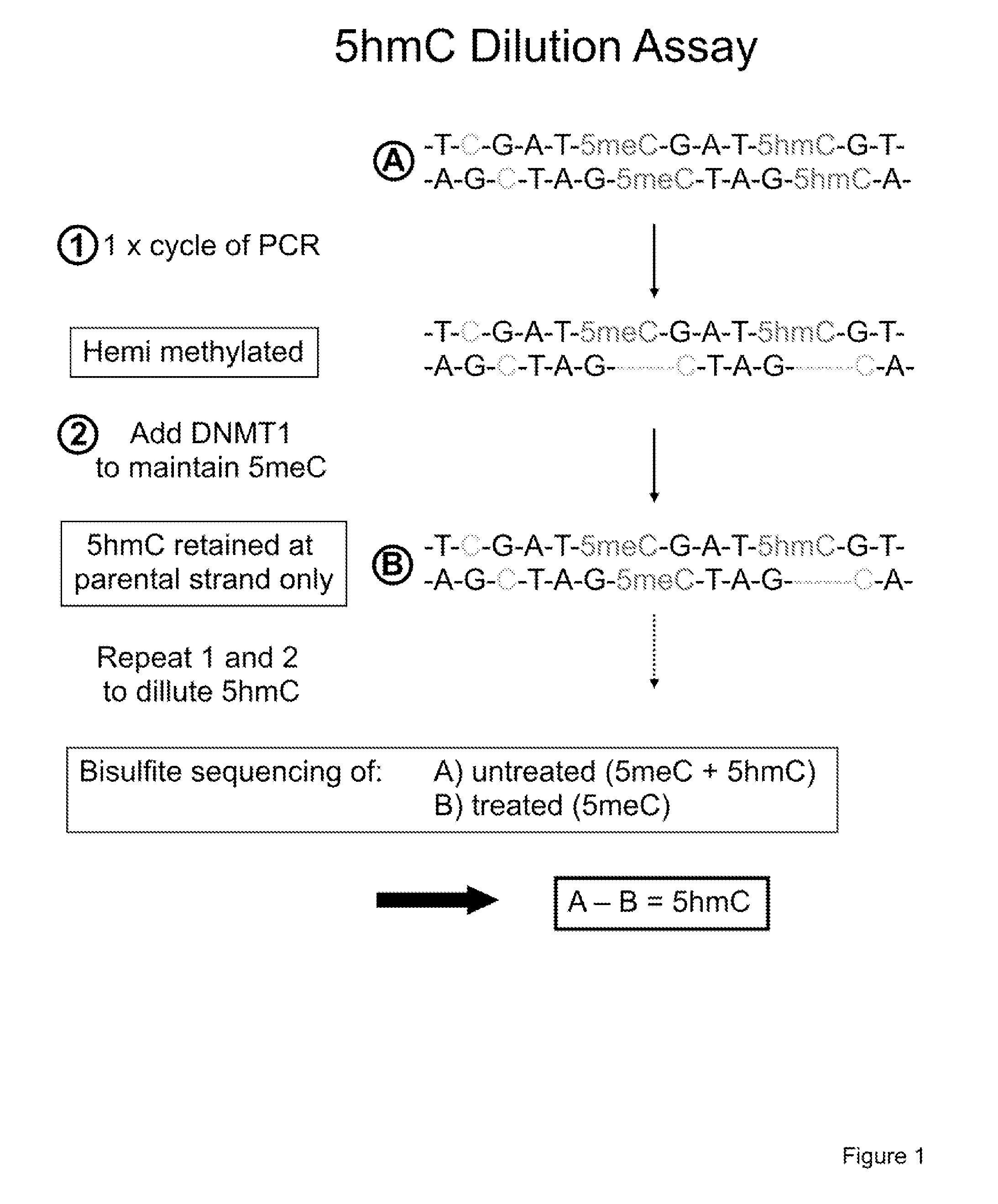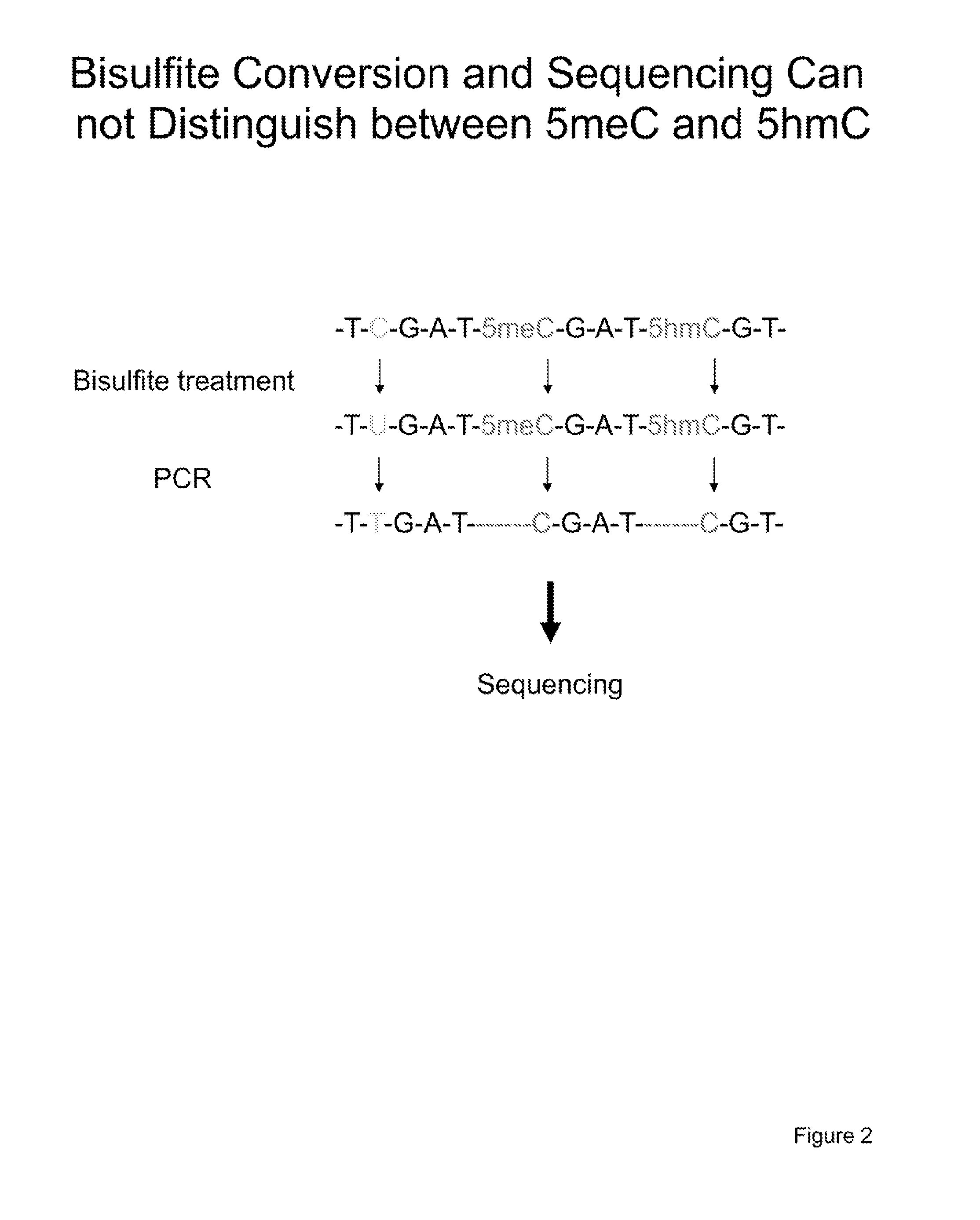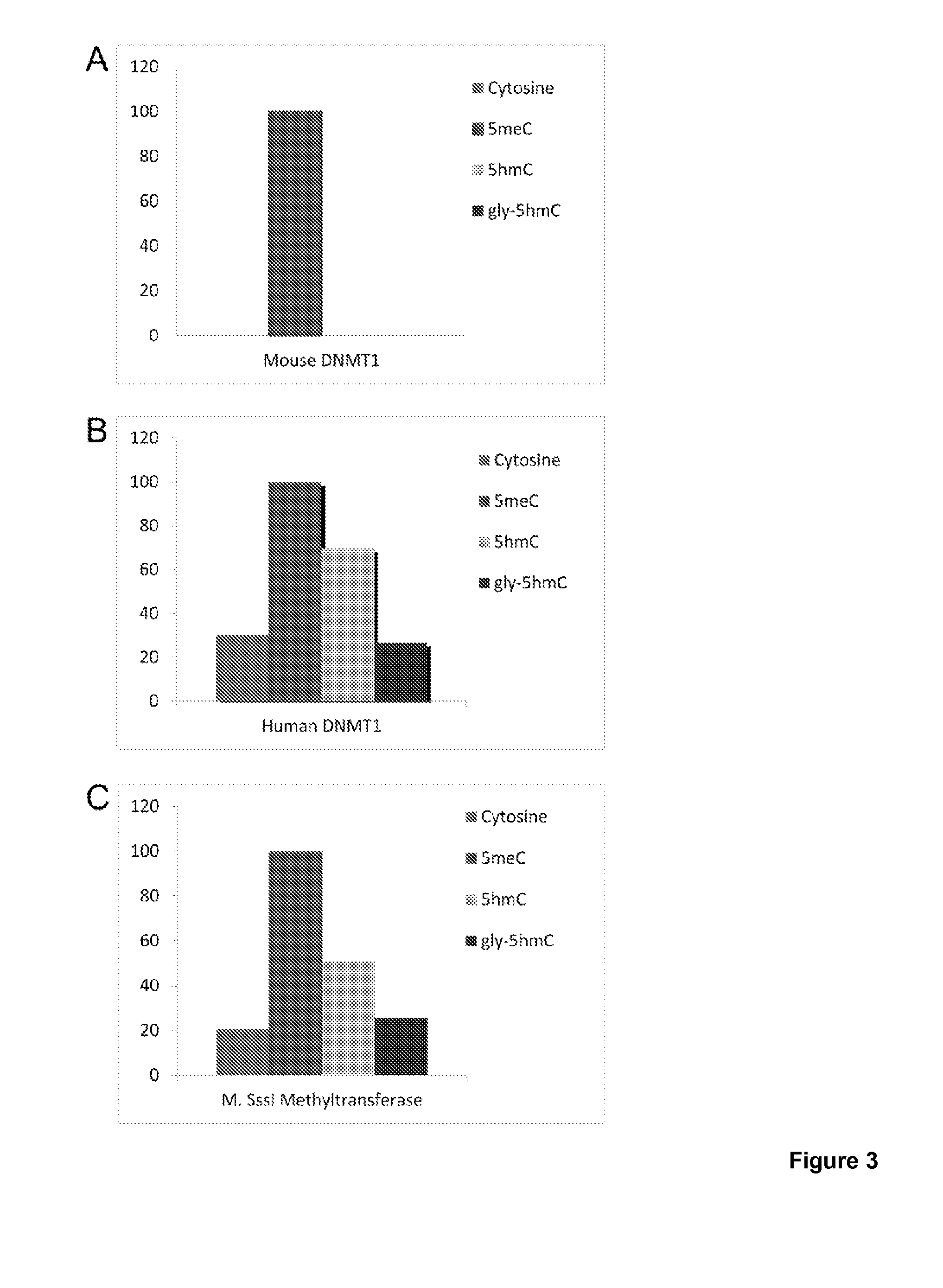Methods and kits for detection of methylation status
a technology of methylation status and kits, which is applied in the direction of microorganism testing/measurement, biochemistry apparatus and processes, etc., can solve the problems of inability to commercialize udp-6-nsub>3/sub>-glucose, prohibitively expensive, and cumbersome analysis of single or a few loci, so as to achieve the maximum efficiency in amplification and significant effect on hybridization efficiency and strength
- Summary
- Abstract
- Description
- Claims
- Application Information
AI Technical Summary
Benefits of technology
Problems solved by technology
Method used
Image
Examples
example 1
[0103]The method described here relies on the successive dilution by PCR of the 5hmC modification along with maintenance of the 5meC modification given that DNMT1 cannot methylate across from 5hmC and cytosine; however, DNMT1 can methylated DNA across from 5meC. FIGS. 3 and 4 demonstrate that DNMT1 cannot catalyze the transfer of a methyl group from S-adenosyl-methylmethionine when the DNA substrate is either a cytosine, 5hmC or a β-glucosyl-5hmC. Therefore, it is possible to dilute the 5hmC modification by PCR followed by treatment with DNMT1 while the 5meC modification will be maintained through multiple rounds of PCR and DNMT1 treatment.
[0104]Our method applies bisulfite conversion and sequencing of sample “A”, untreated DNA, which will be used as a reference as it will detect the total of both 5meC and 5hmC. The method involves a 5hmC dilution assay, diluting 5hmC in the total pool of DNA fragments while maintaining 5meC. This dilution is achieved through sequential rounds of on...
example 2
[0134]Addition of a chemical group to 5hmC, such as glucose can be performed to increase the ratio of methyl transferase efficiency between 5meC and 5hmC. See FIG. 13. Sterical blocking of the methyl transferase at the modified 5hmC position can be taken advantage of to increase the robustness of the methyl transferase dependent assay. Here we show the blocking effect of the addition of a glucose to 5hmC in a radioactive methyl transferase assay. Both DNMT1 and M.SssI can be efficiently blocked by the addition of a chemical group with a size larger than what can fit into the methyl transferase pocket, for example by the addition of glucose. By logical reasoning from our data and the previous demonstration of that a cytosine carbon-5 group of —CCCH3 (size of 6.1 Å) does not fit into the methyl transferase pocket (Valinkluck and Sovers, Cancer Res, 2007) one can assume that the addition of any chemical group to 5hmC which makes the total group too large for the methyl transferase pock...
PUM
| Property | Measurement | Unit |
|---|---|---|
| pH | aaaaa | aaaaa |
| pH | aaaaa | aaaaa |
| volume | aaaaa | aaaaa |
Abstract
Description
Claims
Application Information
 Login to View More
Login to View More - R&D
- Intellectual Property
- Life Sciences
- Materials
- Tech Scout
- Unparalleled Data Quality
- Higher Quality Content
- 60% Fewer Hallucinations
Browse by: Latest US Patents, China's latest patents, Technical Efficacy Thesaurus, Application Domain, Technology Topic, Popular Technical Reports.
© 2025 PatSnap. All rights reserved.Legal|Privacy policy|Modern Slavery Act Transparency Statement|Sitemap|About US| Contact US: help@patsnap.com



